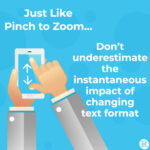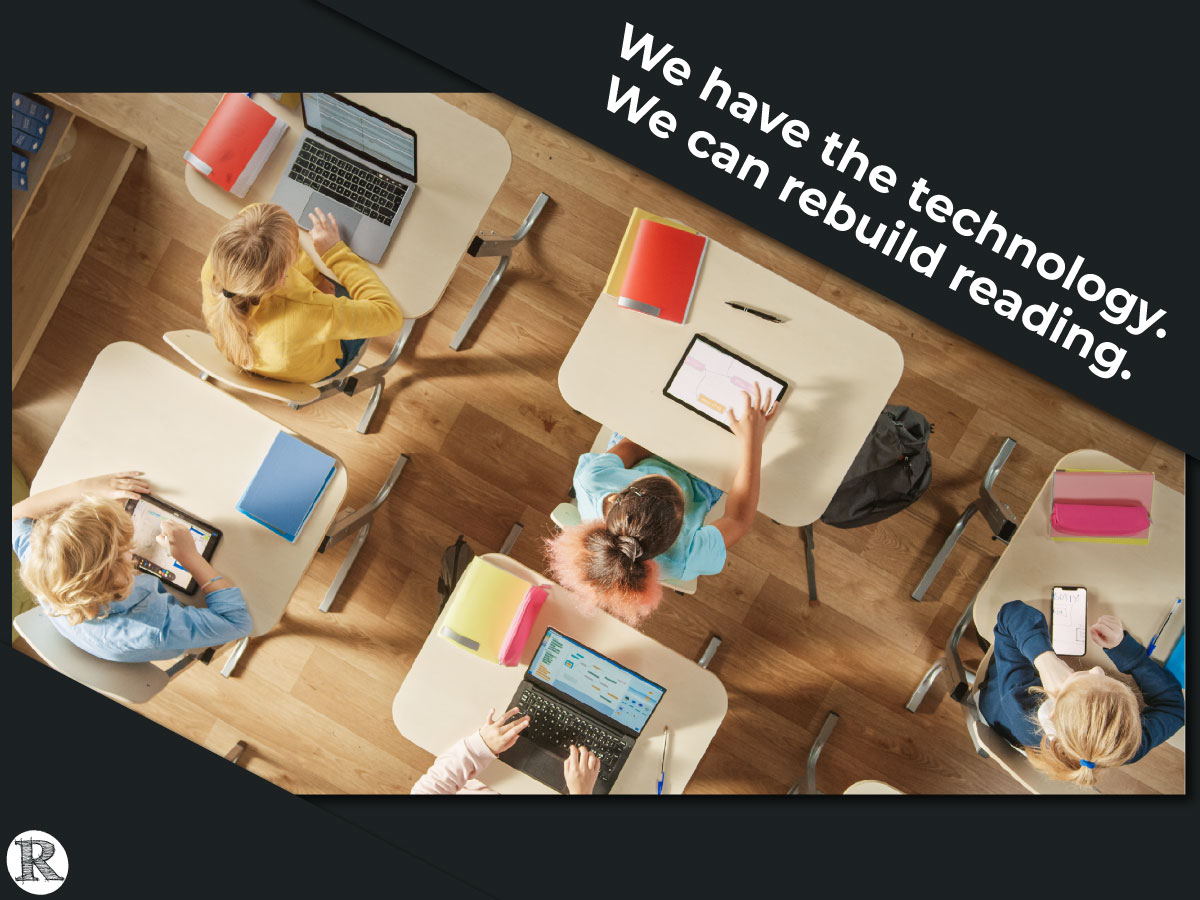We have the Technology
We have all experienced it. We have used the pinch and zoom features on our Smartphones to change the text size and instantly improve our reading speed, accuracy, and comprehension. And, once we did, we experienced more comfort and enjoyment and greater engagement with the content. The technology exists today to give readers the choice to change text size and to change many more attributes of the typography. Research demonstrates that personalized customizations to text style can significantly improve the reading experience for an individual.
The Technology is Available, and the Impact is Great
 Reading and learning apps can offer the reader simple text format adjustments today. With personalized text formats, the reader is likely to read more, read longer and enjoy the experience more. These typographical changes can increase both reading speed and comprehension instantaneously. (See the recent study showing an average simultaneous impact to both speed and comprehension of 20% here.)
Reading and learning apps can offer the reader simple text format adjustments today. With personalized text formats, the reader is likely to read more, read longer and enjoy the experience more. These typographical changes can increase both reading speed and comprehension instantaneously. (See the recent study showing an average simultaneous impact to both speed and comprehension of 20% here.)
Today, many applications allow readers to change the reading font or background color. A few allow adjustments to character spacing or line spacing. Those that make use of variable font technology can allow further user adjustments to character weight and width. All of these features are easy to implement. The technology already exists. These features can offer preference-based improvements today.
The challenge is to get reading and edTech apps to offer the features. Let’s all ask for it. Ask a textbook provider for better reading on behalf of your children. Ask the reading app and browser providers (Amazon Kindle, Apple, Google, Microsoft and Adobe) for more features. Ask your favorite news sources for more. Which surfaces and applications do you use to read? Ask the developers for more readability features.
We can Rebuild Reading
Content providers must implement existing technologies to add more readability features. And, we must go further. We must develop diagnostics to help the reader discover their optimal text format for reading. This is where the real work needs to be done.
Let’s investigate the use of AI, speech recognition, eye tracking, and the existing tools of cognitive and vision science to determine a reader’s most effective reading format. Once we know a reader’s best format, we can store a reading profile and deliver all of the reading content using the reader’s best format.
Using their best reading format, readers will save time, learn more and get more done.

Play with Features in the Readability Sandbox
Experiment with readability features that may improve your reading experience. Change base font, text size, character and line spacing, character width and more.
Discover Apps with Readability Features
Review the readability features you can start using today in some of your favorite reading apps from Amazon, Microsoft, Adobe and more.




